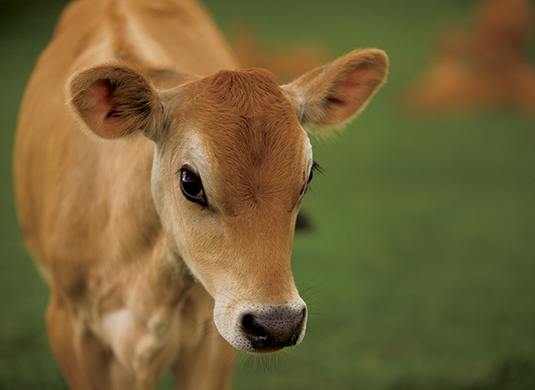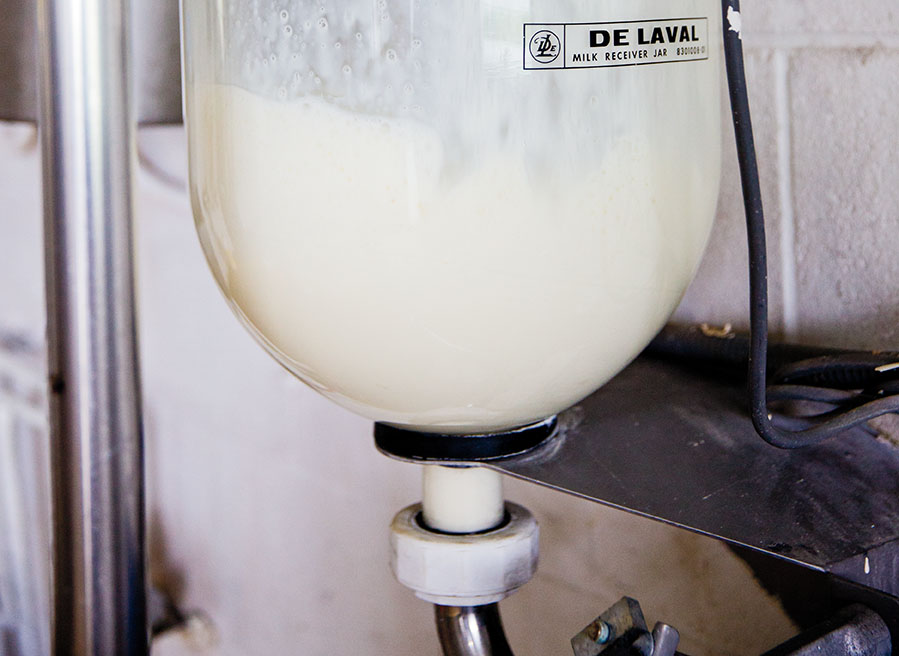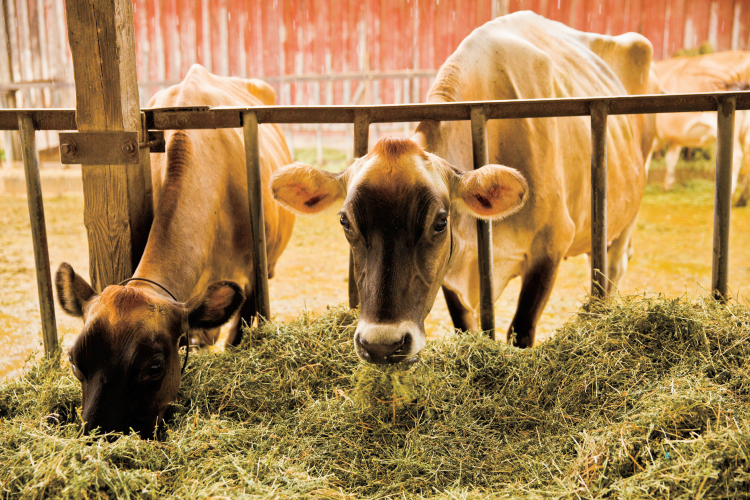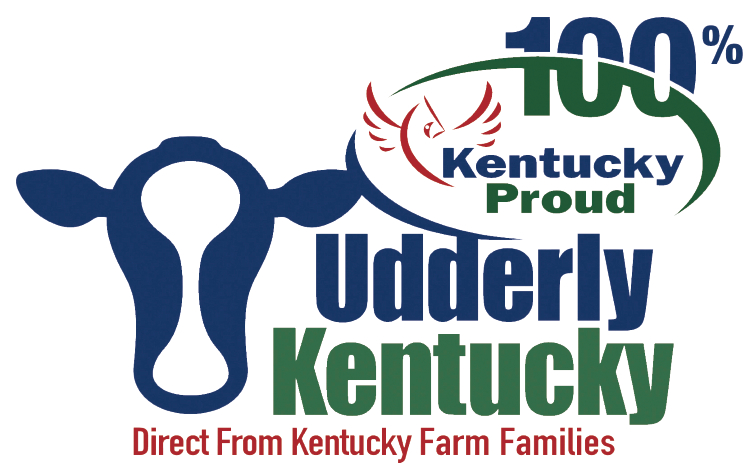Home > Kentucky > Kentucky Crops & Livestock > Udderly Kentucky Milk
Udderly Kentucky Milk
Farmer Dante Carpenter’s family has milked cows since 1947 in south-central Kentucky. And he plans to maintain that heritage, in spite of challenging times for dairy producers.
Slim margins and high costs teamed with a maturing farmer base have fueled a dairy decline in Kentucky. Yet the state’s dairy farmers collectively work against the odds.
The rural Kentucky landscape lost 40 percent, or 48,000, of its dairy cows between 1993 and 2013, based on data from the National Agricultural Statistics Service. Yet milk production declined only about 23 percent in the same time frame. In fact, between 2011 and 2012, milk production increased while cow inventories decreased.
Carpenter is among the farmers doing more with less. Increased management, frugal decision-making and diversification have maintained the farm’s longevity, he says.
“I’ve been spending where I need it the worst,” he says. “We don’t buy a whole lot of things. We utilize what we have.”
Roger Snell, farm-to-retail liaison and Kentucky Proud grant administrator, adds that for years, there has been nothing but negative news for the dairy industry across the U.S., especially in Kentucky. That is until the Kentucky Department of Agriculture (KDA) recently released the Udderly Kentucky branding program. Snell says it has been the first positive for the state’s industry in a long time.
Udderly Kentucky is a brand under the umbrella of the state’s Kentucky Proud marketing program, which aims to encourage consumers to buy local Kentucky products. With its own logo, website and more, the Udderly Kentucky brand focuses on the state’s dairy industry, identifying milk produced by one of more than 100 Kentucky family farms and processed by Prairie Farms Dairy of Somerset. Sales under the brand provide premiums to the participating farms. Currently, the milk is being sold at Wal-Mart locations in central and south-central Kentucky.
“Commissioner Comer had previously spread the word about this project to a lot of retailers in the state, but Wal-Mart and Prairie Farms have really stepped up to the plate,” says Snell. “Prairie Farms took on a lot of responsibility in processing 100 percent branded milk. That’s what makes it so meaningful, and consumers have really responded.”
With 105 farms as part of the program so far, Snell says the response is only growing. The program has gotten great consumer response, but the KDA was overwhelmed by the response from producers, universities and other retailers, pining to be a part of Udderly Kentucky.
“The department is looking at just how broad they can get, and are trying to pull in every single dairy farm in the state,” says Snell. “That would be eight times as many farms as there are now, but the commissioner has set a high standard.”
He adds that one of the most astounding impacts that has come from the program is the willingness of consumers to buy local, even if it means spending more. Snell says that regardless of the demographics in the area, when you look at the numbers, people are more willing to buy the locally branded milk, which is a dollar more than the cheapest option available.
“It’s great to see that consumers are willing and want to support local dairy farms,” says Snell.
Those local dairy farms include 73,000 to 75,000 cows on about 750 farms, says Maury Cox, executive director of the Kentucky Dairy Development Council (KDDC). Dairy farms are most prevalent in south-central and southwestern Kentucky. And these cows prove their worth in more than milk to Kentucky, when you take into account processing, retail value, jobs and more.
“The average cow is an economic generator, in a community have an economic ripple effect of $13,700 per year,” Cox says. He adds that every 1,000 cows generate about 10 to 12 direct jobs, he says. From those jobs come 40 indirect and induced jobs.
The KDDC, a collaboration of farmers, industry representatives and university researchers, formed in 2005 in response to the decline in herd numbers. The council is funded in part by a grant from the Kentucky Agricultural Development Fund. The council’s goal is to sustain and grow Kentucky’s dairy industry.
The council, its programs and resources, can take some credit for the industry’s improved performance. Cox says the MILK program, or Market Incentive Leadership for Kentucky, has served as a catalyst to increase milk production. The program includes nearly half the milk produced in the state. It provides incentives to farmers to produce more high-quality milk and keep milk dollars in Kentucky.
“Our producers are really paying attention to production per cow and milk quality,” he says.
Cox says dairy farming is a heritage and provides tremendous economic generation in the community. And it’s just plain good for Kentuckians.
“It provides good wholesome food for people,” he says. “When you’re doing something with your life that matters and makes a difference, it’s well worth the effort.”







